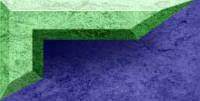|
March 7, 2003
Materials Needed
- Samples of three different types of analgesics
- Glass pipet(prepared in class)
- Glacial acetic acid
- 1,2-dichloromethane
- 95% ethanol
- acetone
- mixed "hexanes"
- ethyl acetate
- acetic acid
- three thin layer plates impregnated with silica gel
- UV lamp
- 3-500mL beakers(used as developers)
Procedures
- pulverize sample to a fine powder with the back of laboratory spoon
- prepare a glass pipet by warming the pipet and stretch when it is soft, break the pipet to create to small tipped pipets.
- took a small amount of the powdered analgesic and place it in a beaker
- mixed powered analgesic (aleve) with a small amount of 95% ethanol and swabbed a small amount on the tip of the glass pipet
- placed swabbed pipet at the bottom of three large silica plates and dotted with a pencil to indicate where it was placed.
- swabbed two other analgesics (aspirin and ibuprofen) and caffeine with the glass pipet and dotted it on the silica plate
- Also dotted with a pencil to indicate where products had been placed
- Prepared three following mixtures:
a) 1:12 (acetic acid: 1,2-dichloroethane) in mL
b) 25:1 (ethanol: acetyl acetone) in mL
c) 5:1:1:2 (1,2-dichloroethane: acetone: ethanol: mixed hexanes) in mL
- Placed silica plates in each of the mixtures and allowed them to rise until 1/8 in. of tip
- Allowed to dry and placed all three silica plates under ultraviolet (UV) light and circled where the color had moved.
- Placed all three silica plates in an iodine bath and let sit for 10 minutes.
- After soaking in iodine bath we then circled the stains where each color (analgesic) had moved.
Observations:
- Take a look at connecting page for our Rf values
- All three mixtures were clear (like water) and gave off a strong aroma
- After iodine bath our lead was the only analgesic bound by the iodine.
- Caffeine dot hardly moved at all.
|

